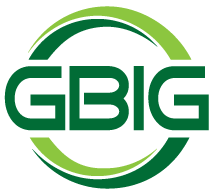Industrial pipelines are designed to operate in demanding environments. Protection against corrosion, abrasion, and chemical exposure is essential. Choosing the right types of pipe coating depends on factors such as operating conditions, exposure to moisture, and durability requirements.
Here’s a look at different types of pipe coating for industrial applications.

1. Fusion-Bonded Epoxy (FBE) Coating
Fusion-bonded epoxy coatings provide strong corrosion resistance. This type of coating is applied as a powdered resin that melts and bonds to the pipe surface when heating. FBE coating is standard for steel pipe coating in high-temperature and underground applications as it offers long-term durability and protection.
2. Polyurethane Coating
Polyurethane (PU) coatings protect against impact and chemical exposure. This type of pipe coating is known for flexibility and works well in environments where pipelines are subject to stress. Polyurethane coatings can also reduce surface friction to improve flow efficiency.
3. Polyethylene Coating
Polyethylene (PE) coatings provide high levels of moisture protection and mechanical strength. This thermoplastic layer is commonly applied for steel pipe coating in oil, gas, and industrial pipeline systems. Its benefits include a multi-layer composition that provides added durability to prevent damage from soil pressure and external impact.
4. Coal Tar Epoxy Coating
Coal tar epoxy coatings provide a thick barrier against moisture and corrosion. It is often used for submerged or buried pipelines. This cost-effective coating is ideal for wastewater, marine, and industrial applications where water resistance is critical.
Coaltar enamel is an older type of coating used for pipeline protection. Due to its environmental impact, this type is being phased out in most applications.
5. Zinc Coating (Galvanization)
Zinc coatings create a protective layer that resists atmospheric corrosion. Galvanization is commonly used for steep pipe coating to protect pipelines exposed to air, water, or fluctuating environmental conditions.
Coating Measurement & Compliance
Maintaining precise coating measurements is critical for quality control and compliance with industry regulations. Recent updates to industry standards emphasize thickness assessments to ensure optimal pipe coating performance.
The ASTM A123 Revision (2024) introduces a new material category for forgings and castings. It also clarifies minimum coating thickness requirements and refines terminology to improve consistency in steel pipe coating applications.
The PHMSA Pipeline Safety Rule (2023) mandates coating assessments within six months of a gas transmission pipeline entering service. It also requires voltage gradient surveys to detect flaws and timely repairs to maintain pipeline integrity.
Several standards related to high-voltage holiday detection have also been revised to replace the “100 volts per mil” rule and improve coating flaw detection accuracy. Current standards align test voltage calculations with Paschen’s Law, which describes the relationship between the breakdown voltage and the product of gas pressure and electrode distance in a gaseous medium. Updated standards include:
- ASTM D4787 – Using high-voltage holiday detectors to check coating continuity.
- ASTM D5162 – Methods for detecting coating defects on metal surfaces.
- ASTM G62 – Test procedures for identifying holidays in pipeline coatings.
- NACE SP0188 – Best practices for holiday testing of protective coatings.
Choosing the Right Pipe Coating for Durability and Compliance
Selecting the correct type of pipe coating will ensure durability, corrosion resistance, and compliance with updated industry standards. Recent coating measurement updates improve accuracy, helping industries reduce maintenance costs and extend a pipeline’s working life.
To learn more about choosing the right types of pipe coating or updates to industry standards, contact Adam Kahler at akahler@quadplus.com or call (815) 210-9885.




